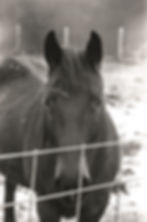
The Canon Rebel Xs or EOS 500 as it was known in North America, is an awesome camera with a lot of great features. I picked mine up for $12 with a Canon branded camera bag and EOS lens. The lens works fine on any of my Canon DSLRs. “How cool is this?” I kept thinking. I got two things I could use for that price. The lens was a Kit lens, 35-80mm. I have used this lens a lot as a backup. The lens seems to be sharper than my 18-55 kit lens. While this lens lacks image stabilization it does produce sharper images.
You can check out the full specs here
Before I got to shooting on this camera I preemptively stuck a piece of film in the camera back and left the camera in a bright room for a day. When I developed the film by tossing it in with another batch of film I was processing I was able to see some locations of light leaks. I preemptively replaced the light seal material. Other than blowing the camera out with a puffer there was nothing else this camera needed to function.
The Rebel X feels a lot like a modern Canon DSLR. It actually feels like somewhere in uncanny valley between a SLR and a DSLR. The camera also feels “off” to me since it grips like a Rebel, but it doesn’t feel quite heavy enough. It’s also a strange sensation to me to take a shot and have the camera grind the film forward. You must understand that I moved to digital early from point-and-shoot cameras as a teen. I never got the SLR experience. So I am going backward from the top of the line digital, back to mid range analog.

The Rebel X feels lighter than a DSLR, and is slightly shallower due to the film back. Other than that the camera feels almost identical to a Canon DSLR. The buttons are all in the same place, besides a lack of viewfinder shooting with the camera is almost the same as a DSLR. Once I got over having to set the ISO and leave it for the next 24-36 shots. I spent most of my time in Aperture Priority mode and let the camera do it’s own metering. The results were consistently well exposed images. I shoot in Manual mode a lot and started watching for excessively long exposure times before I clicked the shutter. I know to do this from experience with a DSLR, however with film the stakes for taking a bad photo are much higher. Even on a cloudy day the Rebel X performed very well when it came to guessing exposures.

If you can shoot a DSLR without looking at all your pictures in the review screen, you can shoot on this thing. The shutter goes all the way from 30” to 1/2000 sec. The shutter feels just like my T5i. I actually really like the “clunk” sound of the mirror lockup when I take a shot, it’s louder than digital. I suspect this is bad, and that the receiving foam for the mirror is old and brittle.

Auto-focus is interesting to say the least. It’s clear that we have come an amazingly long way. There is only one auto-focus point on this camera. There is a mark at the very center of the viewfinder. What I found to work best when I wanted to have shallow focus was to let the camera focus by pointing at my subject and then click the AF switch on the lens off. Time after time this camera would nail focus. As long as I let the camera focus my lenses and wasn’t shooting into a dark area the camera would perform flawlessly at pulling focus. The camera also seemed to like all my canon lenses except my 75-300. I suspect this is because the lens has some slight burring on the mount. I was afraid to try to force the lens and the camera together to test this. I have a collection of old Tamron and Vivitar lenses as well as a Pentax K to EOS adapter. Everything worked well with this camera.
For testing I used several lenses that were newer than the camera itself. A Canon 50mm lens worked great on this camera despite being several generations newer. Having a 50mm with this camera is a dream. I fell in love at first impression. I eventually switched to my Yongnuo 50mm F1.8 lens. You can check out that awesome lens here The lens worked very well with the camera. A lens less than two years old worked flawlessly with a camera from 1993. I was amazed, and more importantly, I was having great success. I did even try a few shots with a Pro 35-80 on this camera. The camera liked that lens as well. Every roll I developed with this camera has come out fine.
Film fed well in this camera, no problems with takeup either. Due to the great exposure metering this camera did very well with black and white film. I shot both 400 ISO and 100 ISO in this camera with great results. Canon did a great thing with that camera, I feel like I used a very nice piece of technology from 1993
It’s clear to me after using this camera that its not very hard to jump backward to Canon’s EOS SLR lineup from Canon’s DSLRs. This is exciting for those who want to shoot film for the first time, or in a long time. Being able to use your current bag of lenses is also appealing. There might be some compatibility problems, but for me I had very little issue.








